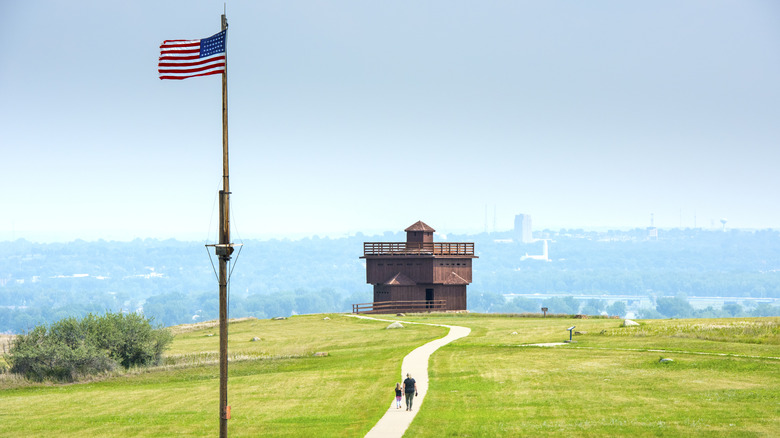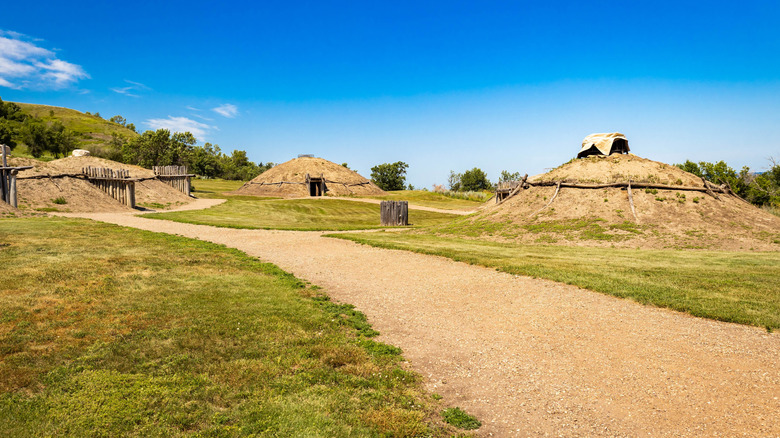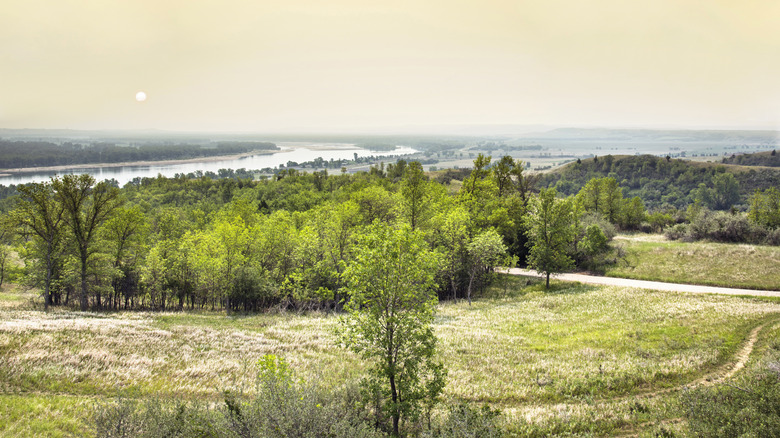North Dakota's Oldest State Park Is A Hidden Gem With Scenic River Valley Views And Military Landmarks
When it comes to outdoor recreation in the U.S., states like Colorado, California, and Wyoming get all the attention, while others like North Dakota fly too far under the radar. This is a shame, as North Dakota actually has a surprisingly rich collection of fantastic outdoor destinations of its own. North Dakota's overlooked treasures include lesser-known hikes like the Boicourt Trail in the underrated Theodore Roosevelt National Park. There's also the Cross Ranch State Park, which has superb paddling and fishing opportunities along the Missouri River. However, the crown jewel of the North Dakota state park system may be its very first one. Though opinions will always differ on which of its state parks is the most beautiful, the amazing Fort Abraham Lincoln State Park has the perfect blend of outdoor beauty and engaging history to delight any traveler.
One major advantage of Fort Abraham Lincoln State Park — particularly for those who don't care for long road trips — is its convenient location. While other North Dakota parks require lengthy drives over vast Upper Midwest terrain, Fort Abraham Lincoln State Park is just 20 minutes away via car from the state capitol of Bismarck. Despite the minimal distance from civilization, the state park remains a scenic preserve of both North Dakota's natural beauty and its complex history. With restored military installations and historic sites, as well as gorgeous views of the North Dakota landscape, Fort Abraham Lincoln State Park is sure to amaze outdoor adventurers and history buffs alike.
Fort Abraham Lincoln blends history with North Dakota's beauty
Established back in 1907, Fort Abraham Lincoln State Park is the first state park in North Dakota. However, the site's history goes back long before that. In the 19th century, Fort Abraham Lincoln was a U.S. military post (then called Fort McKeen), before becoming the headquarters of General George Armstrong Custer, who held command of the fort until his death at the Battle of the Little Bighorn in 1876. Before it became a U.S. military installation, the site was home to the Mandan Native American tribe, who established settlements there as early as 1575.
The modern Fort Abraham Lincoln State Park reflects this long and multifaceted history with excellent restorations, as well as informative and interactive displays. Most notable among the park's historic sites is the remarkable On-A-Slant Village. Situated on the site of a major Mandan settlement that thrived before a devastating 1781 smallpox epidemic, On-A-Slant Village features five reconstructed Mandan earth lodges, complete with interpretive tours and exhibitions that provide information on the indigenous people's history and culture.
Fort Abraham Lincoln State Park also features an interactive reconstruction of the house that General Custer lived in during his time as commander of the fort. Visitors will even encounter guides in period clothing offering tours and information on the site. And, of course, the park features authentic reconstructions of Fort Abraham Lincoln's blockhouses, including the fort's original flagpole. Even if you're not a history buff, you can enjoy Fort Abraham Lincoln State Park's majestic views of the mighty Missouri River and its surrounding river valley. The Missouri is both America's longest river and a major vein of outdoor recreation and natural beauty, and Fort Abraham Lincoln State Park showcases its grandeur as it flows through the North Dakota plains.
Enjoy North Dakota's wonders at Fort Abraham Lincoln State Park
With such an impressive collection of natural and historical treasures, Fort Abraham Lincoln State Park is an excellent stop for a day trip in Bismarck. Many of the top activities in the park involve its excellent historic reconstructions and interactive educational exhibits. Visitors can tour the park's recreated military barracks, Custer House, and Mandan Village for a unique lesson on the people and events that shaped the region. The park's Visitor Center also has an informative museum, with original artifacts and comprehensive exhibits on both the park's Native American and U.S. military history.
Yet Fort Abraham Lincoln State Park is much more than a series of indoor museum exhibits. It also features a terrific network of hiking trails that show off the park's historic sites and stunning outdoor views. The main Fort Lincoln Loop Trail, for example, is an easy, 3.7-mile circular hike that takes you past the park's recreated Mandan village and military installations, with amazing Missouri River Valley views lingering in the background the entire way.
If you're looking for a more authentic 19th-century cowboy experience on your trip to North Dakota, Fort Abraham Lincoln State Park also has 6 miles of trails that are suitable for horseback riding. Alternatively, the bluffs along the Missouri River make excellent spots for fishing and scenic picnics. The park's day-use hours are 7 a.m. to 10 p.m. daily. However, Fort Abraham Lincoln does have several overnight camping facilities, including 51 modern campsites, 15 modern group campsites, 15 primitive campsites, one primitive group campsite, four primitive horse campsites, and two cabins.


